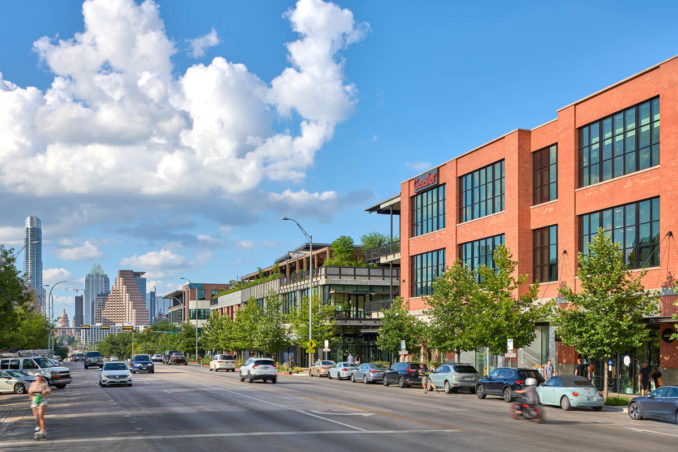
Located along a busy section of the vibrant South Congress (SoCo) entertainment district in the heart of Austin, Music Lane creates an engaging pedestrian experience. The 51,000 square foot (4738 m2) mixed-use development embraces the site’s urban character while providing a respite from the bustling traffic along South Congress Avenue. Inspired by the quirky sense of discovery that informs the current magic of SoCo, Music Lane creates a series of peel-off spaces that invite users in to explore beyond the main street frontage. Special attention was paid to local materials, utilizing a native Texas plant palette, locally-quarried limestone pavers, and custom-built steel planters and water feature elements.
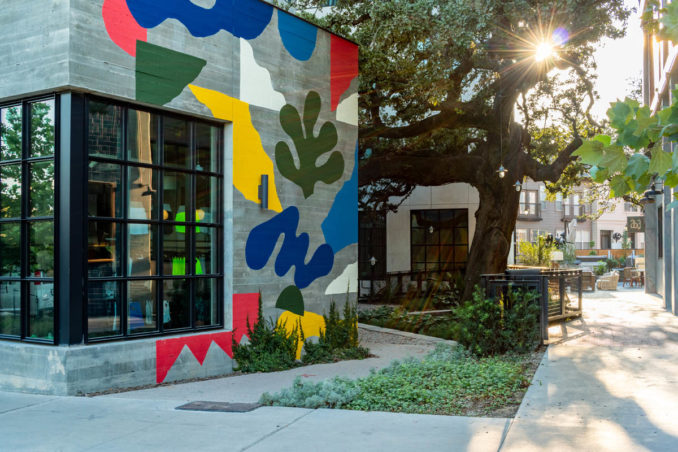
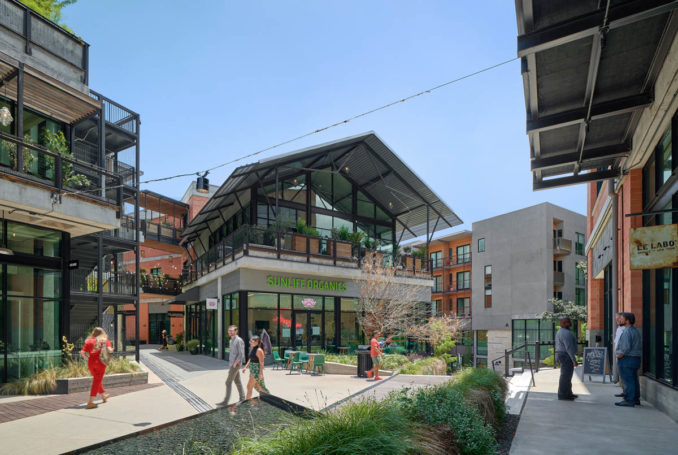
One of the major design challenges was the site’s geology and topography. Prior to its development, the approximately 2-acre site spanned a limestone outcropping—causing most of the site to sit 15 feet below South Congress Avenue—and included historically buried natural springs and stormwater infrastructure. The design negotiates this significant grade change within a compact footprint by crafting a series of intimately scaled spaces with thoughtful connections that draw visitors in. The site’s history of springs is expressed through a series of water features and rills that weave through the site, providing ambience and encouraging visitors to explore the interconnected paseos, courtyards, and decks. In addition to reflecting the history of water on the site, some features actively manage current water use by collecting and directing stormwater or by utilizing reclaimed A/C condensate from the adjacent architecture.
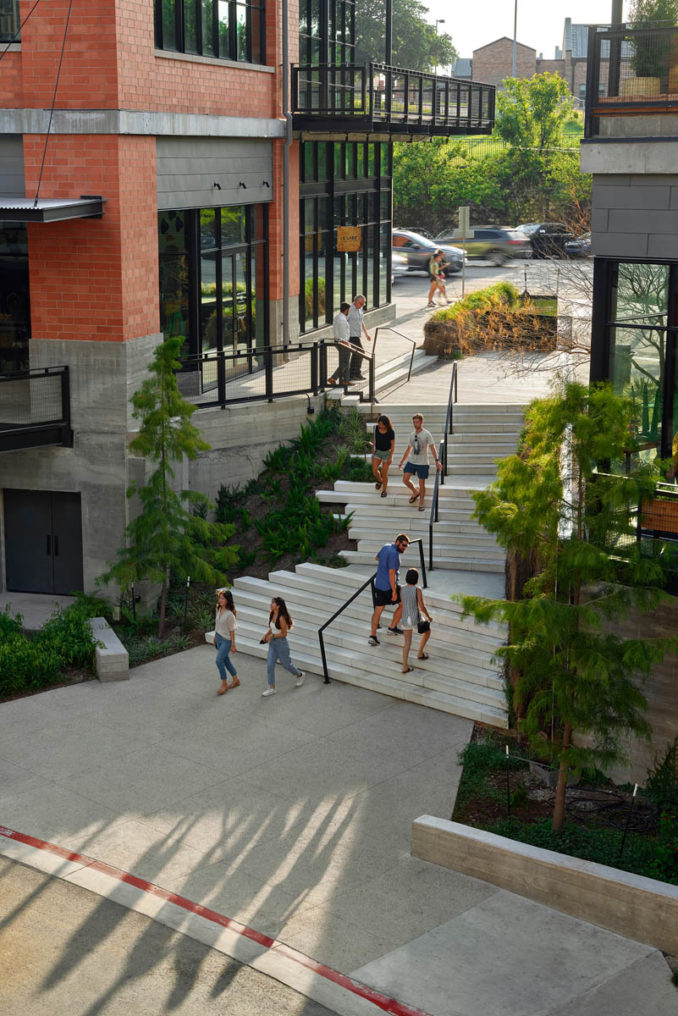
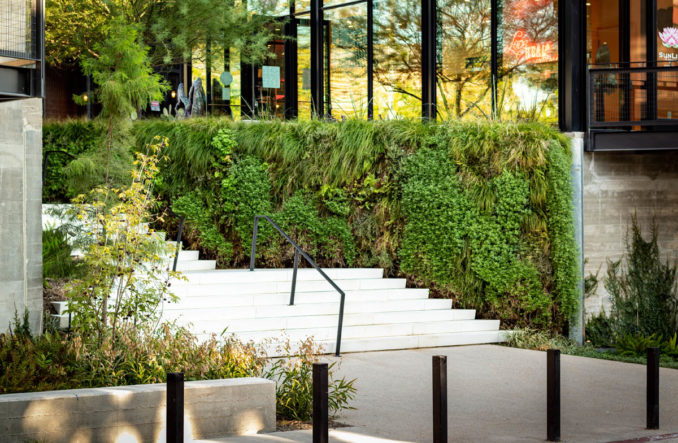
In order to preserve two 300+ year-old heritage live oaks on the site, LIDAR scanning technology was utilized to create a detailed 3D survey that allowed for precise decisions about pruning, protection, and architectural extents. The building footprints and envelopes above were sensitively positioned to create unique courtyard spaces that respond to the natural environment and greatly influence the identity of the site.
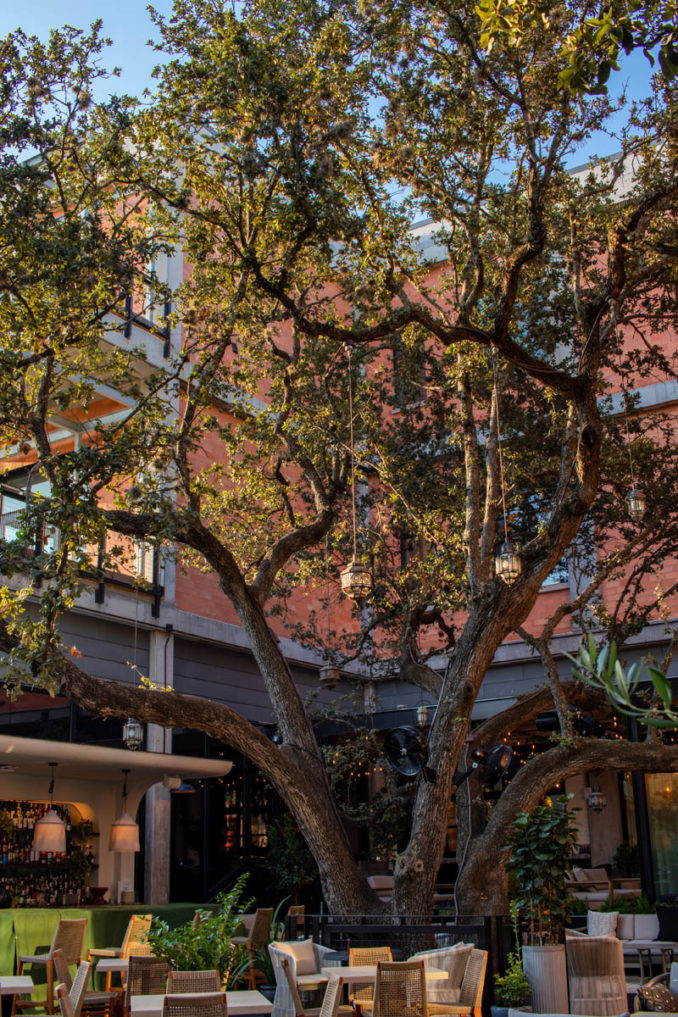
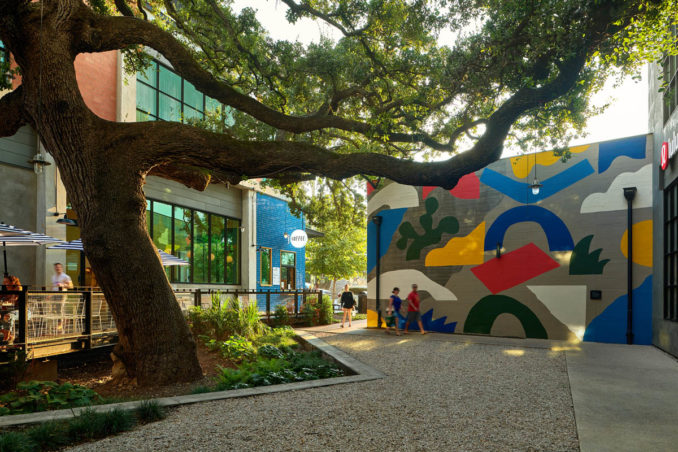
The landscape is built upon a below-grade parking structure, which allowed for additional pedestrian-friendly retail and restaurant spaces at ground level. In addition to parking, below the surface is a network of hidden systems that support the sustainable functioning of the landscape: (2) 5,000-gallon cisterns in the parking garage collect A/C condensate for irrigation and water feature use; and Silva Cells below the right-of-way paving provide adequate soil volume to support vigorous vine growth on the building’s facade. Since nearly all of the landscape was built over structure, the project introduced green walls, vine armatures, and soil cells to maximize space for native plantings.
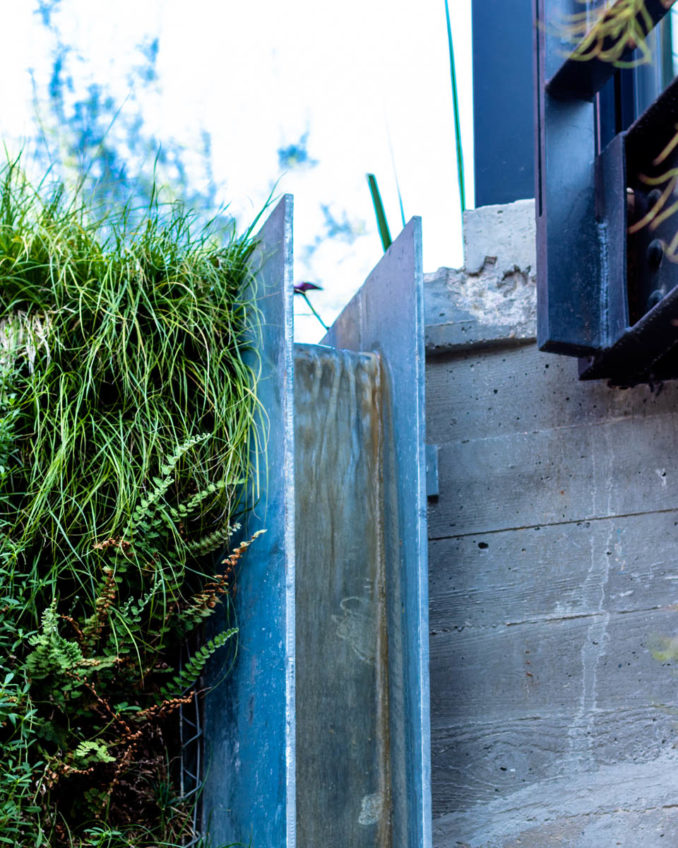
By thoughtfully responding to the site’s challenges and by utilizing natural materials, textures, and plantings that generate a warm and welcoming setting for a diverse array of visitors and tenants, this development has fast become a hot destination for shopping, dining, work, and play. Music Lane weaves together the complicated features of an urban development—balancing beauty with functionality and embracing the vibrancy of the streetscape as well as the respite to be found in secluded spaces—and invites visitors to come in and discover more.
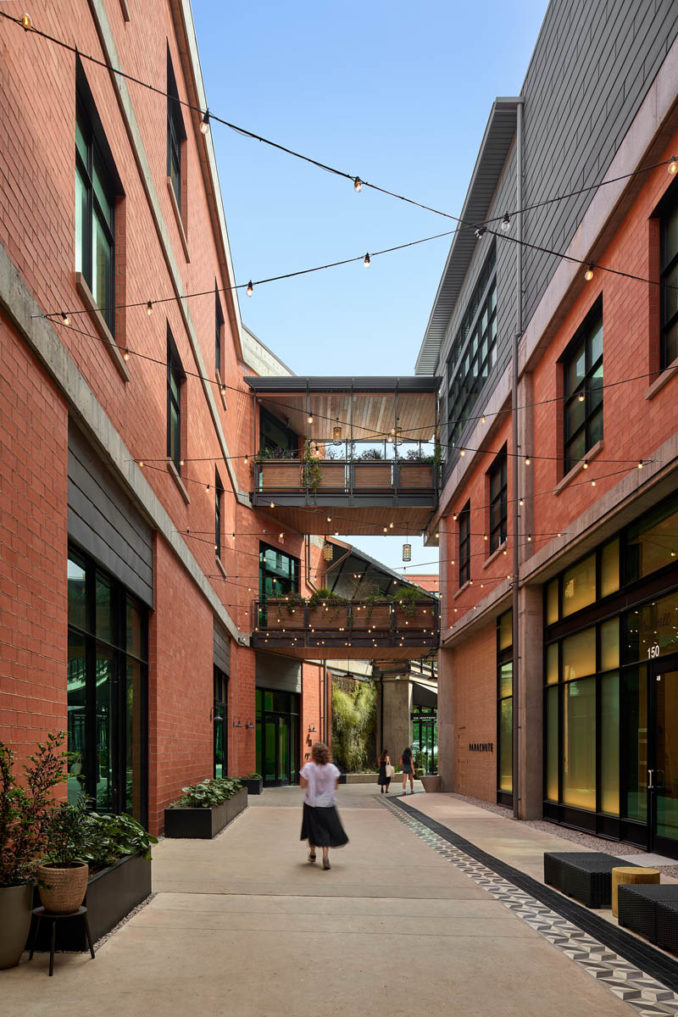
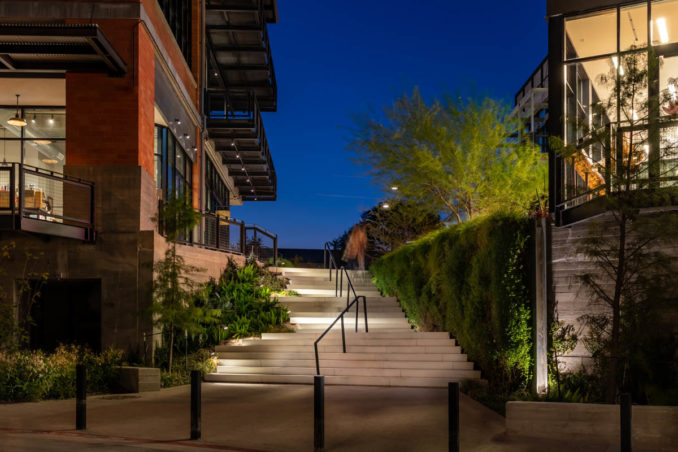
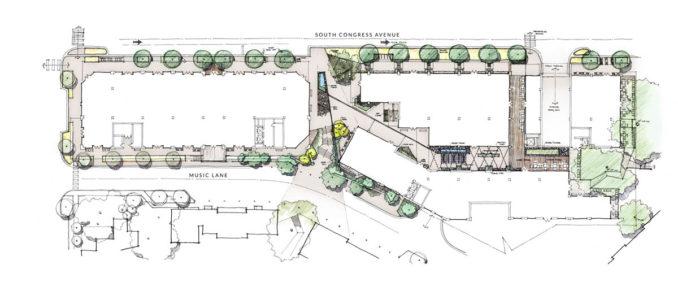
Music Lane
Location: Austin, Texas, USA
Landscape Architect: dwg.
Collaborators:
Lake |Flato Architects
WGI – Civil Engineer
AEC – Structural Engineer
Client: Music Lane, LLC
Photography: dwg., and Peter Molik Photography
